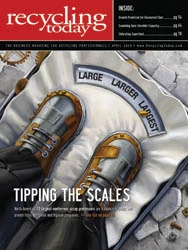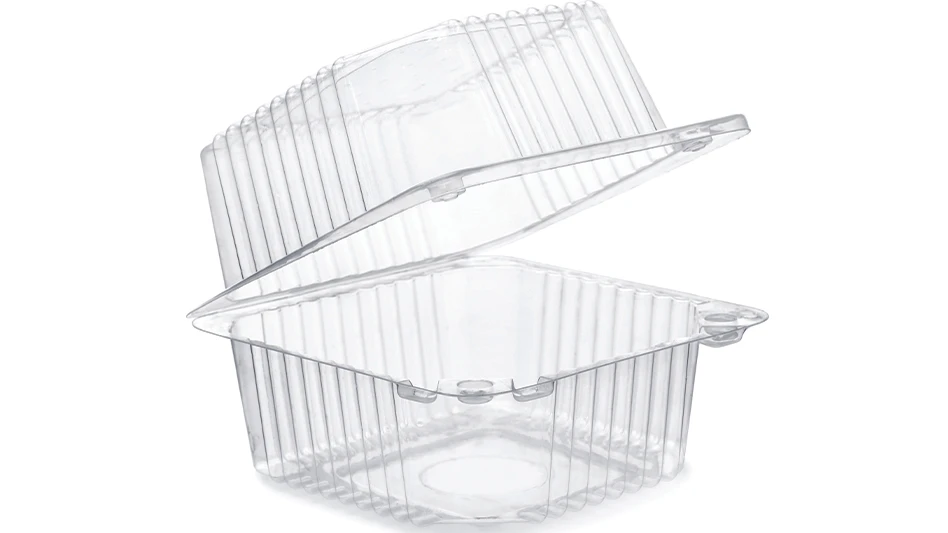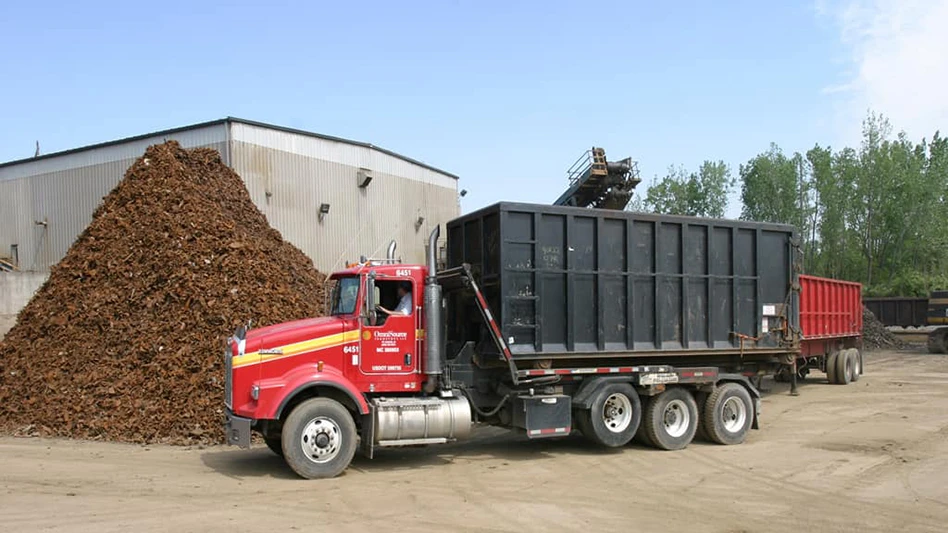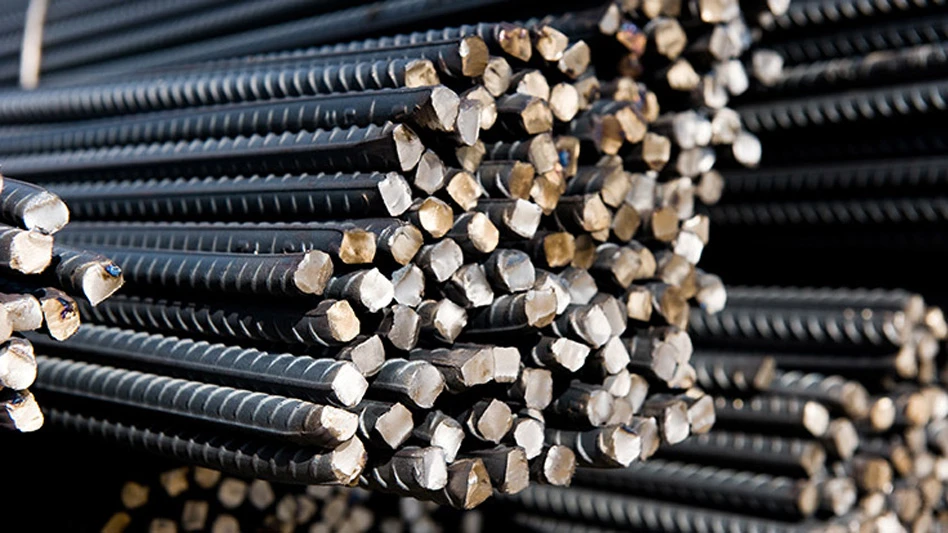In today’s global economic climate teeming with heightened market volatility, customer uncertainty and intensive pressures to minimize capital expenditures, one variable that no recycler can afford to face is the prospect of extended equipment downtime.
One of the best ways to combat these forces and avoid every equipment manager’s nightmare is to focus on the equipment’s “second life” in the form of rebuild options. When available, rebuild options provide an entire host of opportunities and advantages, often times maximizing production in a cost-effective manner.
CONTEMPLATING REBUILD
Michigan CAT (MCAT) has considerable experience in rebuilding material handlers serving the scrap steel and recycling industries.
“Our material handling rebuild program was crafted to satisfy a diverse set of customers who all needed to maximize production through the most cost-efficient means available,” says Brian Schulz, vice president, product support at MCAT.
“We saw strong companies who had neither the time nor financial inclination to invest in new material handlers, yet could sustain no drop-off in production.” From this set of client needs, “We developed a philosophical and operational template based on replicating certain features already established within the CAT Certified Rebuild program for dirt and mining equipment,” Shulz adds.
Schulz and his team then customized the program to fit the myriad requirements of customers in the material handling industry.
“From the start, our goal was to satisfy our customer’s wants by fostering and taking advantage of the inherent second life our CAT material handlers have engineered within them from time of manufacture,” Schulz says.
From a sales perspective, the cost-benefit analysis of rebuilding a material handler as opposed to purchasing a new one often provides a compelling motivator for customers. Michigan CAT Sales Manager Terry Erickson reports a heightened interest when presented with what can be a viable option. “When customers are leaning toward a rebuild and calculate that they can have what is in many ways a like-new machine for 50 to 70 percent the cost of a new machine, there is usually a eureka type moment,” Erickson says.
“The economic pressures on customers today are unprecedented. The markets are competitive. Soft steel demand [drove] down scrap prices and volumes, creating a trickle effect distressing numerous industries. Simply getting financing and bonding is more difficult than anyone can remember.”
“All these factors add up and make it very difficult for customers to justify large equipment purchases. Beyond all else, financial considerations are at the forefront of every customer conversation we have, which makes the cost advantages of a rebuilt material handler increasingly relevant.”
With the unpredictability of demand that most manufacturers are faced with, inevitable lapses in production have at times caused gaps, forcing the reality on the marketplace that the new material handler a client wants might not be available for an extended time.
“Very few customers can afford any downtime, but when a new material handler might not be available for six to nine months, and a rebuilt one will be available in as few as two, another relevant issue enters into the customer’s consideration,” Erickson says.
PERFORMING THE REBUILD
The life an organization can squeeze out of a new material handler varies based on a number of factors, including service history, physical environment and application usage. Typically, customers consider the option of a rebuild once a material handler reaches 15,000 hours.
“Astute customers realize that the costs of servicing a machine are extraordinarily higher after an engine failure than before,” says Pat Monahan, MCAT regional field services manager.
“If a customer has taken care of the machine and is considering utilizing its second life, we often recommend initiating those discussions around 12,000 hours. At that point, we can begin the comprehensive evaluation process to customize the rebuild.”
The evaluation process is characterized by an inspection process that includes fluid analysis, visual inspections and a maintenance history review, with the total number of diagnostic tests numbering greater than 100.
During disassembly, thousands of parts are either reconditioned or replaced before the powertrain is tested and the unit is reassembled. Importantly, all of the engineering updates that have been developed since the time of manufacture are incorporated, helping to foster many “like-new” capabilities.
Strenuous performance testing specific to the features of material handlers throughout the rebuild typifies MCAT’s collaborative process, taking advantage of the resources and knowledge pools flooding the organization and designed to meet customer expectations.
“Because the manner in which customers utilize material handlers can vary greatly, the success of the rebuild demands not only precise technical expertise but seamless communication between the product support and sales teams,” Erickson says.
As an added bonus to the economic factors justifying some customers’ desire for rebuilds, there are additional benefits from an environmental standpoint. Despite the huge sum of reconditioned or replaced parts, 20 to 60 percent of the rebuilt machine is reused.
POST REBUILD
The improved reliability of a rebuilt machine, along with the enhanced availability of parts, offers an attractive package to many recyclers. Most organizations capable of rebuilding a material handler offer similar-to-new warranties for both the parts and the powertrain. Like all equipment dealers, Michigan CAT’s “customers are their lifeblood,” adds Schulz. “With a 66-year history of serving customers in this industry, Michigan CAT has a vested interest and often personal obligation to the rebuild based on closely held business relationships. This requires constant tracking of the rebuild and offering the option of a robust warranty package to support it,” he says. “The equipment dealer must have a mutual stake in the success of the customer’s equipment and the success of their business.”
When it comes to resale value, there is a marked premium in the value of rebuilt material handlers as opposed to used material handlers, notes Bob Neumann, used equipment manager at MCAT.
“The differences in condition and application are so great when appraising material handlers globally that it is sometimes difficult for buyers to separate the good from the ugly. A rebuild performed through a respected and established organization provides a tangible characteristic that creates added certainty in the unpredictable nature of used equipment.”
THE RIGHT ORGANIZATION
Beside the financial and productivity benefits of a rebuilt material handler, finding the right organization to perform the rebuild is possibly the most critical aspect in ultimately deciding to move forward, according to Tony Benacquisto, executive vice president, operations for Ferrous Processing & Trading Co., the Detroit-based processor and trader of scrap materials.
“We have rebuilt several material handlers with Michigan CAT and our trust in their service capabilities along with their knowledge in our business were key factors,” he says.
Benacquisto urges businesses to find a “reputable, experienced outfit” that can adapt to the host of applications a material handler customer works within. “Otherwise, the benefits in cost and productivity are significantly muted.”

Explore the April 2010 Issue
Check out more from this issue and find your next story to read.
Latest from Recycling Today
- Toppoint Holdings expands chassis fleet
- Lego creates miniature tire recycling market
- Lux Research webinar examines chemical recycling timetables
- Plastics producer tracks pulse of wire recycling market
- Republic Services, Blue Polymers open Indianapolis recycling complex
- Altilium produces EV battery cells using recycled materials
- Brightmark enters subsidiaries of Indiana recycling facility into Chapter 11
- Freepoint Eco-Systems receives $50M loan for plastics recycling facility





